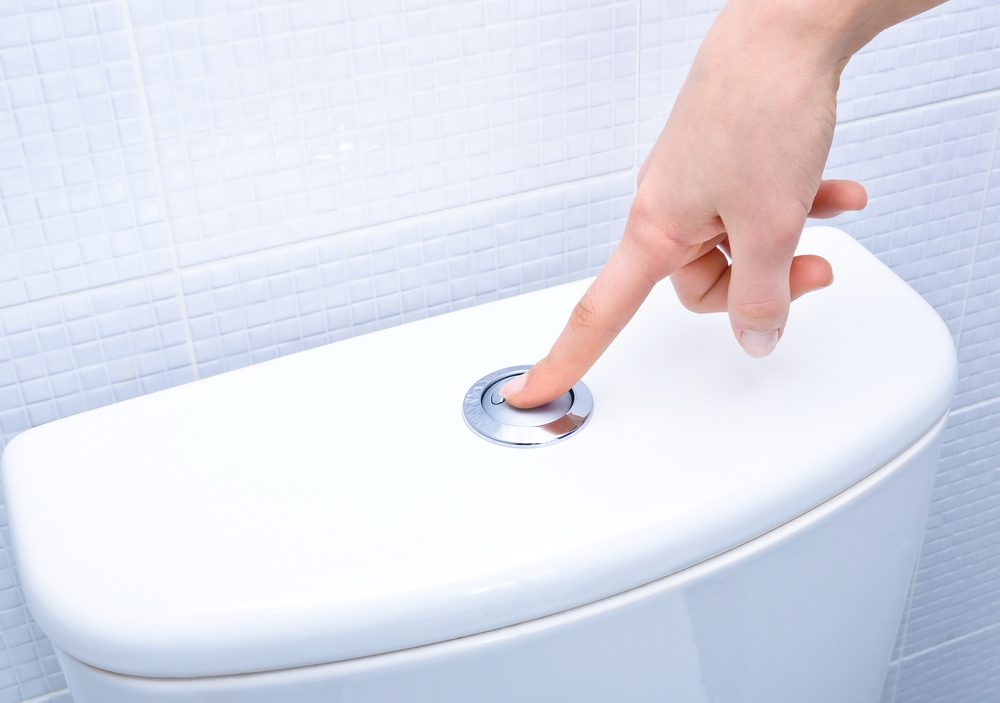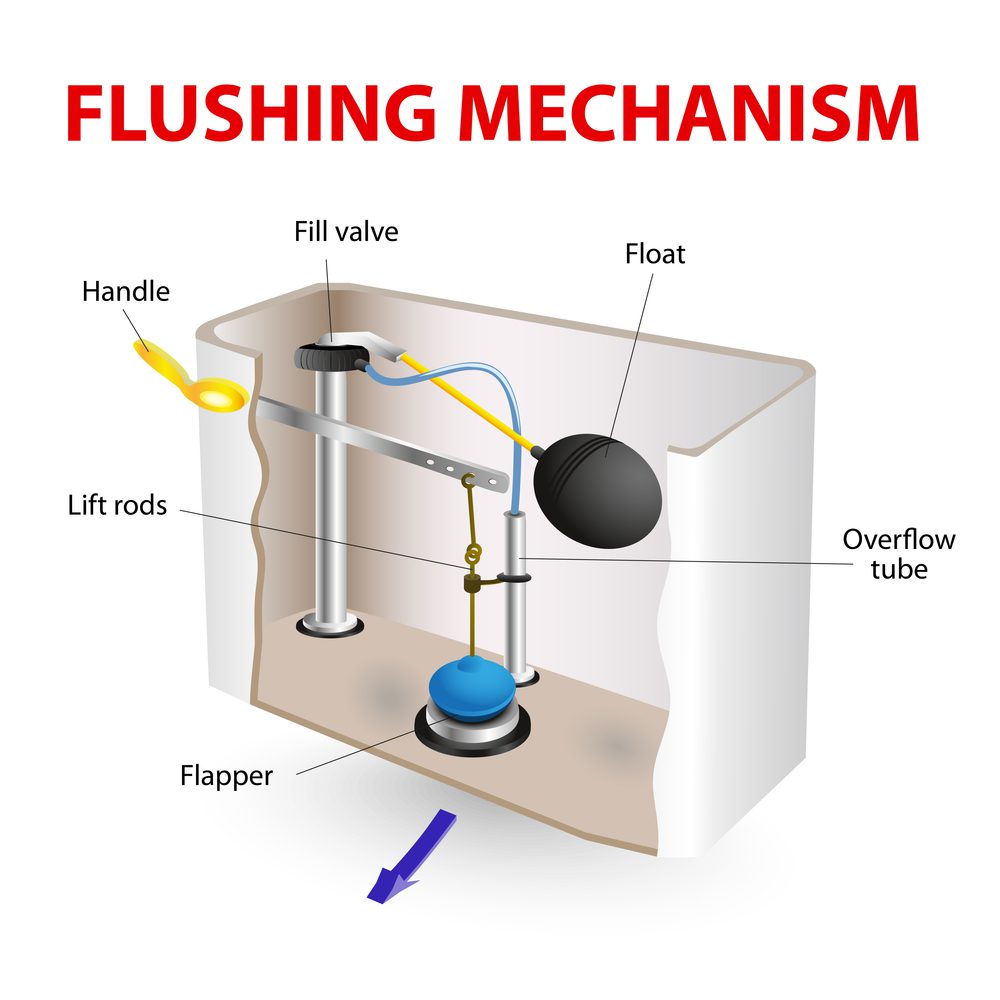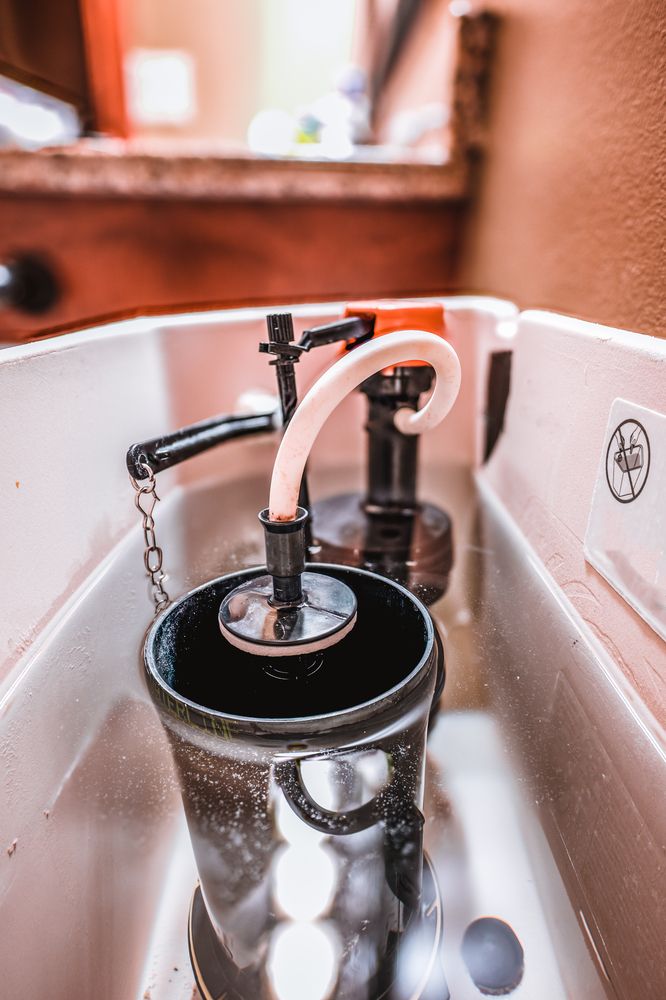If you have a toilet that whistles when flushed, you’re in the right place. That whistling sound isn’t normal. But, don’t worry. There‘s a simple solution. This article teaches you how to fix a whistling toilet, how a fill valve works, if it’s okay to ignore the whistling, how to fix a toilet that doesn’t flush at all, and if you should call a professional.
How To Fix A Toilet That Whistles When Flushed
If your toilet whistles when flushed, the problem is usually a faulty fill valve. This valve regulates the amount of water that enters your tank after you flush and is generally located in the left rear corner of your toilet’s tank. The louder the whistle, the more likely the fill valve needs replacement. Luckily, replacing the fill valve is relatively simple.
- Wipe off any mineral buildup on your fill valve (this could be the cause of the whistling).
- Turn off the water supply valve to your toilet (the hose connecting your toilet to your wall).
- Flush your toilet to drain out your tank.
- Remove any remaining water in your tank with a sponge or towel.
- Use a wrench to disconnect the old supply line from the toilet tank.
- Disconnect the fill tube connected to the overflow pipe.
- Disconnect the fill valve by unscrewing the valve nut.
- Place the new fill valve in the tank, ensuring the washers are in the correct places.
- Use your hands to tighten the lock nut on the threaded part of the fill valve underneath the tank.
- Use a wrench to reconnect the water supply line to the bottom of the fill valve.
- Turn your water supply back on and check for any leaks.
- Follow the instructions that came with your new fill valve and adjust the float so that it sits about one inch below the overflow pipe.
- Flush your toilet once the tank refills and listen for any whistling.
The whistling might even come from your water supply valve. If it’s partially closed, you’ll need to turn it counterclockwise as far as it goes. If you still hear a whistle, it’s probably the fill valve.


How A Toilet Fill Valve Works
The fill valve is equipped with a float that rises and falls with the water level inside your toilet’s tank. As the float falls, it opens the valve and allows water to fill the tank. Once the water reaches a certain level, the valve will close and shut off the water supply to the tank.
Should You Ignore The Problem?
If you don’t replace your fill valve and let the whistling continue, it could end up costing you. A whistling or failing fill valve can waste hundreds or even thousands of gallons of water each year.
Fill valve replacement seems like a simple repair, but if it’s installed incorrectly, it could cost you thousands in-home repairs due to water damage.
What If Your Toilet Doesn’t Flush At All?
If your toilet doesn’t flush at all, the problem may be more than just the fill valve.
- Check your toilet handle – If your toilet handle is disconnected, reconnect the flapper chain to the tank lever. Or, if the handle is broken, unscrew the old one and replace it.
- Check your tank’s water level – If there isn’t enough water in your tank, it won’t flush because it can’t dump enough water back into the bowl. In this case, you need to adjust your float ball.
- Check your flapper – If your flapper is bent, cracked, or not closing properly, you can easily buy a new one and replace it.
- Check your lift chain – If your lift chain has too much slack, your toilet won’t flush. In this case, you need to adjust the length of the chain so that it has about 1/2 inch of slack. If the chain is broken, you’ll need to replace it.
- Check your toilet’s inlet holes – Under the lip of your toilet bowl, there are small holes where water enters your bowl. If these holes are clogged, you’ll need to clean them using a piece of wire. Or, you can pour hot vinegar down your overflow tube.
- Check your drain line – If your toilet has a slow flush, your drain pipes may have been installed incorrectly. If your drain pipes were sloped in the wrong direction, call a professional who can inspect them and decide if they need to be replaced.
- Check if your drain pipe is clogged – There may be a chance your drain pipe is clogged. In this case, you have several options.
- You can use an at-home remedy, such as baking soda and vinegar to clear the clog.
- You can use an enzyme product to liquefy the waste clogging your pipes.
- You can use a sewer snake to clear any clogs.
- You can call a professional who offers hydro-jetting or robotic cutting.
- Check your sewer pipes – If all of the toilets in your house won’t flush, your sewer pipe may be damaged or clogged. In this case, you have three options.
- Pipe lining – Pipe lining is when an epoxy-impregnated liner is inflated inside your sewer pipe and removed, leaving behind a brand new pipe.
- Pipe bursting – Pipe bursting is when a new pipe is pushed into your old one, breaking it apart and immediately replacing it.
- Traditional pipe replacement – If professionals determine that your sewer pipes cannot be replaced using pipe lining or pipe bursting, they might recommend traditional pipe replacement.

Should You Call A Professional?
If you don’t feel comfortable replacing the fill valve yourself, or if you already replaced it and it’s still whistling, it’s time to call in a professional. If you live in Glendora, California, and your toilet whistles when flushed, call SWE Sewer Solutions & Engineering. Call us for all your plumbing and sewer needs. We offer sewer line repair, replacement, installation, robotic cutting, and more.